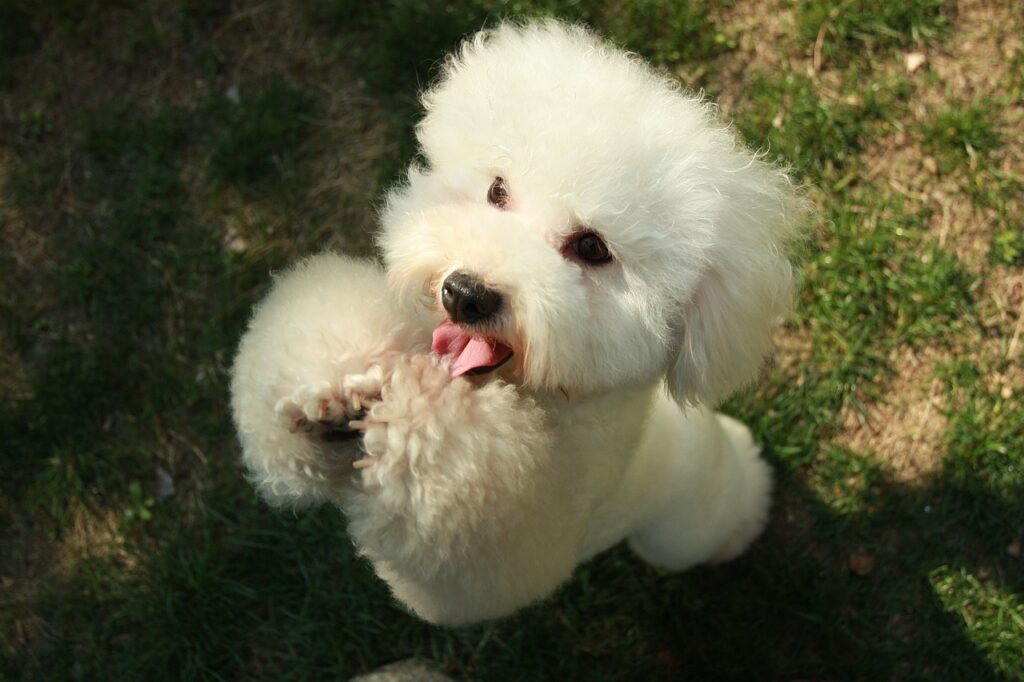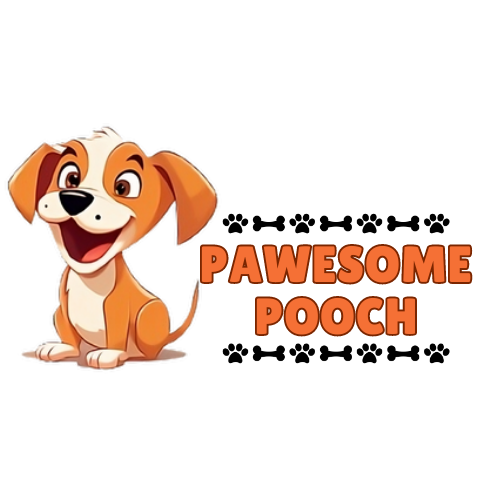
Imagine harnessing the power of training sessions to not only teach your dog new skills but also strengthen the bond you share. It may sound unbelievable, but the truth is, training can be more than just a way to control unwanted behaviors or improve obedience. It can become a remarkable opportunity for you and your furry friend to connect on a deeper level, building trust, communication, and a sense of teamwork. In this article, we will explore the different ways in which training can enhance your relationship with your dog and provide practical tips on how to make the most of these bonding sessions. Get ready to embark on an incredible journey of companionship and mutual understanding with your canine companion!
Understanding the Benefits of Training for Bonding
Creating a Stronger Bond
Training your dog is not just about teaching them commands and tricks, but it is also an opportunity to strengthen the bond between you and your furry friend. When you engage in training activities with your dog, you are creating a shared experience that fosters trust, loyalty, and companionship. By spending quality time together and working towards common goals, you establish a deeper connection that goes beyond mere obedience.
Building Trust and Respect
Training is an essential tool for building trust and respect between you and your dog. Through consistent training, your dog learns to rely on you for guidance and direction. They learn that you are the leader and that you have their best interests at heart. As their trust in you grows, so does their respect. This mutual respect forms the foundation of a strong bond that will carry over into other areas of your relationship.
Enhancing Communication
A well-trained dog is a dog that understands and responds to your commands. Training improves communication between you and your dog, allowing you to convey your expectations clearly. As you learn to understand your dog’s body language and cues, you can better interpret their needs and desires. This increased level of communication leads to a deeper understanding and connection between you and your furry companion.
Promoting Mental Stimulation
Training exercises provide mental stimulation for your dog. Dogs are intelligent animals, and their minds require stimulation to stay happy and healthy. By engaging in training activities, you are providing mental challenges that keep your dog’s mind sharp and active. Learning new commands, tricks, and tasks keeps their cognitive abilities sharp and prevents boredom. A mentally stimulated dog is happier, more content, and more eager to bond with their owner.
Improving Behavior and Control
One of the most significant benefits of training for bonding is the improvement in your dog’s behavior and control. Training helps address unwanted behaviors and sets clear boundaries. When your dog understands what is expected of them, they are less likely to engage in destructive or problematic behaviors. This improved behavior leads to a more harmonious household and strengthens the bond between you and your dog.
Choosing the Right Training Method
Positive Reinforcement
Positive reinforcement training is a highly effective and widely recommended method for teaching and bonding with your dog. This method focuses on rewarding desired behaviors rather than punishing undesired behaviors. By using treats, praise, and rewards, you can motivate your dog to perform specific actions and reinforce positive behavior. Positive reinforcement training creates a positive association with training and encourages a willing and eager attitude from your dog.
Clicker Training
Clicker training is a popular training method that utilizes a small handheld device called a clicker. The clicker makes a distinct sound that marks the exact moment a dog performs a desired behavior. This method allows for precise communication and helps your dog understand what is expected of them. Clicker training, when paired with positive reinforcement, can enhance training sessions and strengthen the bond between you and your dog.
Marker Training
Marker training, similar to clicker training, involves using a sound to mark desired behaviors. Instead of a clicker, a verbal marker such as saying “yes” or using a specific word is used. Marker training allows for clear and consistent communication with your dog, and it can be a useful tool in building a strong bond through training.
Balanced Training
Balanced training combines positive reinforcement with appropriate corrections to teach your dog desired behaviors. This method focuses on rewarding good behavior and correcting unwanted behaviors without harsh punishment. Balanced training encompasses a variety of techniques tailored to your dog’s individual needs and temperament. It is crucial to seek guidance from a professional trainer if you plan to use this method to ensure it is implemented correctly and effectively.
Seeking Professional Help
If you are unsure which training method is best for you and your dog, or if you are struggling with specific training challenges, seeking professional help is always a good option. Professional trainers possess the knowledge and experience to assess your dog’s needs and tailor a training program to achieve your bonding goals. They can provide guidance, hands-on training, and valuable insights to enhance your training sessions and strengthen your bond with your four-legged companion.

Starting with Basic Obedience Training
Teaching Essential Commands
Basic obedience training is the foundation for a well-behaved and bonded dog. Start by teaching your dog essential commands such as sit, stay, come, and lie down. These commands not only ensure your dog’s safety but also establish your role as the leader. Consistency and positive reinforcement are key when teaching these commands. Break down each command into small steps, and reward your dog with treats and praise when they perform the desired behavior. Practice these commands in various environments to reinforce your dog’s understanding.
Establishing a Routine
Establishing a training routine is crucial for consistency and effective learning. Dogs thrive on routine, and they feel more secure and confident when they know what to expect. Set aside designated times each day for training sessions and stick to them. Consistency in training sessions helps your dog understand expectations and reinforces your bond through regular, focused interaction. Incorporate training activities into your daily routine to make it a natural and enjoyable part of your dog’s life.
Setting Clear Expectations
Clearly communicating your expectations is essential for successful training and bonding. Dogs thrive on structure and consistency, so it is important to set clear boundaries and expectations from the start. Be consistent with your commands, use a firm yet gentle tone of voice, and be patient with your dog’s learning process. Help them understand what is expected of them by providing clear cues and rewards for desired behavior. When your dog knows what to expect from you, they can feel secure and confident in their actions.
Using Rewards and Treats
Reward-based training methods rely on positive reinforcement to motivate your dog and strengthen your bond. Utilize treats, praise, and other rewards to reinforce desired behavior. Dogs are eager to please, and when they associate training with positive experiences, they are more likely to engage and cooperate. Experiment with different types of treats to find what motivates your dog the most. Remember to use treats in moderation to maintain a healthy diet for your furry friend.
Advancing to Advanced Training Techniques
Teaching Tricks and Special Skills
Once you have mastered basic obedience training, it’s time to move on to teaching your dog tricks and special skills. Teaching tricks not only impresses your friends and family but also provides mental stimulation and strengthens your bond. Tricks like “shake hands,” “roll over,” and “play dead” are fun and engaging for both you and your dog. Break down each trick into achievable steps, use consistent cues, and reward your dog for their progress. Enjoy the process and celebrate every small victory together.
Introducing Agility Training
Agility training is a fantastic way to bond with your dog while keeping them physically and mentally fit. This sport involves a timed obstacle course that your dog navigates with speed and precision. Agility training requires teamwork, communication, and trust between you and your dog. Start with simple obstacles and gradually increase the difficulty as your dog becomes more comfortable. Enjoy the thrill of watching your dog conquer the course while strengthening your bond through shared achievements.
Exploring Nose Work and Scent Detection
Nose work and scent detection are activities that tap into a dog’s natural instincts and abilities. Dogs have an incredible sense of smell, and utilizing it through training enhances their mental capabilities and deepens your bond. Introduce your dog to nose work by hiding treats or toys and allowing them to use their nose to find them. Gradually increase the difficulty by hiding the scent in more challenging locations. Both you and your dog will enjoy this exciting and rewarding training activity.
Implementing Target Training
Target training involves teaching your dog to touch or follow a specific target, such as your hand or an object. Target training can be used for various purposes, including guiding your dog to specific spots, teaching complex tricks, or improving focus and attention. Start by introducing a target object and rewarding your dog for touching or following it. Gradually shape their behavior and increase the complexity of the tasks. Target training creates a strong connection between you and your dog, as they learn to trust and respond to your cues.
Engaging in Mental Challenges
Mental challenges are a fantastic way to bond with your dog and keep their mind sharp. Engage in activities such as puzzle toys, treat dispensers, and interactive games that require problem-solving skills. These activities provide mental stimulation and prevent boredom, while also forging a stronger bond as you work together to overcome challenges. Choose toys and games appropriate for your dog’s size, age, and skill level, and enjoy the joy of working together towards a common goal.

Incorporating Interactive Play into Training
Playing Fetch and Retrieval Games
Playing fetch and retrieval games is a classic and effective way to bond and train with your dog. These games tap into a dog’s natural instincts to chase and retrieve objects, providing both physical exercise and mental stimulation. Start by teaching your dog to fetch and return a specific toy. Use positive reinforcement and rewards to encourage them to bring the toy back to you. Gradually increase the distance and complexity of the game to challenge your dog and strengthen your bond through shared playtime.
Engaging in Tug-of-War
Tug-of-war is a popular game that can be used as a training tool to establish control and reinforce obedience. Start by teaching your dog the “take it” and “drop it” commands to ensure they understand the rules of the game. Use a sturdy rope or tug toy and engage in a gentle and controlled tug session with your dog. Always let your dog win the game to keep it enjoyable and rewarding for them. Tug-of-war helps build trust and provides an outlet for your dog’s natural instincts.
Participating in Interactive Puzzle Toys
Interactive puzzle toys are an excellent way to engage your dog’s mind and stimulate their problem-solving abilities. These toys usually involve hiding treats or kibble that your dog has to figure out how to access. By encouraging your dog to work for their food, you are not only providing mental stimulation but also strengthening your bond as you guide and support their learning process. Choose puzzle toys that are appropriate for your dog’s size and skill level, and enjoy watching them solve the puzzles with enthusiasm.
Exploring Hide and Seek Games
Hide and seek games are a fun and interactive way to train and bond with your dog. Start by having your dog wait in one area while you hide somewhere else in the house or yard. Call your dog’s name or use a command to let them know the game has started. As they find you, reward them with praise and treats. This game not only stimulates your dog’s sense of smell and their problem-solving skills but also enhances your bond by creating a playful and exciting experience together.
Making Training Sessions Enjoyable for Both
Keeping Sessions Short and Fun
Training sessions should be short, focused, and enjoyable for both you and your dog. Dogs have short attention spans, so it is essential to keep sessions brief to prevent frustration or boredom. Aim for 10-15 minutes per session and gradually increase the duration as your dog’s focus improves. Keep the atmosphere light-hearted and fun, incorporating play and rewards into the training process. Ending sessions on a positive note leaves your dog eager for the next session and strengthens the bond through positive associations with training.
Using Positive Reinforcement and Praise
Positive reinforcement and praise are powerful tools in training and bonding with your dog. Reward your dog with treats, praise, and affection every time they perform a desired behavior. Positive reinforcement creates a positive association with training and motivates your dog to engage and invest in the process. The use of praise, such as a cheerful tone of voice or gentle petting, shows your dog that they have done well and strengthens the bond between you.
Avoiding Punishment and Harsh Techniques
Punishment and harsh techniques have no place in a training routine focused on bonding. Physical punishment, yelling, or other aggressive methods erode trust, create fear, and damage the bond between you and your dog. Instead, focus on positive reinforcement, patience, and clear communication to guide your dog towards desired behavior. Be patient with your dog’s learning process and avoid frustration or anger. Training should be a positive and enjoyable experience for both of you.
Being Patient and Consistent
Patience and consistency are key when training your dog and building a bond. Dogs learn at their own pace, so it is crucial to be patient and understanding throughout the process. Avoid rushing or expecting quick results, as this can lead to frustration and setbacks. Consistency is also important in training. Use the same cues, commands, and rewards to reinforce your dog’s understanding. Consistency helps your dog feel secure and confident, making the training experience positive and effective.
Adapting to Individual Needs
Every dog is unique, and what works for one may not work for another. It is essential to adapt your training techniques to suit your dog’s individual needs and personality. Pay attention to your dog’s learning style and adjust your approach accordingly. Some dogs may respond better to treats, while others may be motivated by play or praise. By understanding and accommodating your dog’s individual needs, you can create a training program that fosters trust, cooperation, and a strong bond.

Incorporating Training into Daily Activities
Using Training Commands during Walks
Walking your dog is a great opportunity to reinforce training and strengthen your bond. Use training commands during walks to practice obedience and reinforce good behavior. For example, ask your dog to sit before crossing the street or to walk calmly by your side. Incorporating training commands into daily walks not only helps your dog understand expectations but also reinforces your role as their leader and builds trust.
Practicing Training during Mealtime
Mealtime is another daily activity that can be used for training and bonding. Incorporate training commands such as sit, stay, or leave it before feeding your dog. By asking them to perform tasks before mealtime, you establish yourself as the one who provides resources and reinforces your dog’s respect for you. This routine activity becomes an opportunity to engage your dog’s mind, reinforce manners, and strengthen your bond through shared experiences.
Utilizing Training for Grooming and Vet Visits
Grooming and vet visits can be stressful for both you and your dog. However, by incorporating training into these activities, you can make them more enjoyable and less anxiety-inducing. Teach your dog to remain calm and cooperative during grooming sessions by using training commands and positive reinforcement. Similarly, practice basic obedience training during vet visits to ensure your dog remains focused and well-behaved. Training helps your dog associate these necessary activities with positive experiences and strengthens your bond through trust and cooperation.
Training in Social Settings and Public Places
Training should not be confined to your home but should also extend to social settings and public places. Exposing your dog to different environments and situations helps them navigate the world with confidence and reinforces their training. Practice obedience commands in parks, busy streets, or other public places to reinforce their understanding and trust in your guidance. By training in various settings, you strengthen your bond and ensure your dog remains obedient and well-behaved in any situation.
Building Trust and Bonding through Handling and Touching
Regular Grooming and Brushing
Regular grooming and brushing sessions provide an opportunity to bond with your dog through touch and care. Create a positive association with grooming by starting with short sessions and gradually increasing the duration as your dog becomes more comfortable. Use gentle strokes and positive reinforcement to reward your dog for their cooperation. Regular grooming not only keeps your dog’s coat healthy but also deepens your bond by fostering trust and creating a calming and enjoyable experience.
Encouraging Positive Associations with Touch
Touch is a powerful way to build trust and bond with your dog. Encourage positive associations with touch by incorporating gentle touch and massage into your daily routine. Spend time petting and stroking your dog in a comforting and relaxing manner, paying attention to areas they enjoy being touched. Massage techniques, such as gentle kneading or long strokes, can help your dog relax and create a deeper connection between you and your furry companion.
Teaching Calm Response to Handling
Teaching your dog a calm response to handling is crucial for their well-being and for building trust. Start by gently touching your dog’s paws, ears, and other sensitive areas while rewarding them for remaining calm. Gradually increase the intensity and duration of handling, always rewarding calm behavior. This training helps your dog feel comfortable and secure during routine tasks such as nail trimming, ear cleaning, or veterinary examinations. By teaching a calm response to handling, you strengthen your bond through trust and cooperation.
Developing a Bond through Massage
Massage is not only a great way to bond with your dog but also has numerous health benefits. Massage helps relax muscles, improves circulation, and reduces stress and anxiety. Start by gently massaging your dog’s neck, back, and shoulders using slow and gentle motions. Pay attention to your dog’s reactions and adjust your pressure and technique accordingly. Incorporating massage into your bonding routine provides a relaxing and enjoyable experience for both you and your dog.
Taking Training to the Next Level with Advanced Classes
Enrolling in Obedience or Advanced Training Classes
Enrolling in obedience or advanced training classes is an excellent way to take your training and bonding to the next level. These classes provide structured learning environments where you and your dog can learn new skills, practice existing commands, and receive guidance from professional trainers. The group setting allows for socialization, creating opportunities for your dog to bond with other dogs and people. Joining obedience or advanced training classes not only enhances your training knowledge but also strengthens your bond through shared experiences and achievements.
Participating in Canine Sports and Competitions
Canine sports and competitions are a fantastic way to bond with your dog while showcasing their skills and abilities. Sports such as agility, obedience trials, flyball, and dock diving provide opportunities for you and your dog to engage in challenging and rewarding activities. Participating in these events enhances training, strengthens the bond through teamwork, and builds mutual trust and confidence. Whether you aim for competitive success or simply want to have fun, canine sports and competitions create unforgettable bonding experiences.
Joining Therapy Dog Training Programs
Therapy dog training programs offer a unique opportunity to bond with your dog while making a positive impact in the community. Therapy dogs provide comfort and companionship to individuals in various settings, such as hospitals, nursing homes, and schools. These programs involve training your dog to be calm, well-behaved, and comfortable around different people and environments. Through therapy dog training, you and your dog strengthen your bond while bringing joy and comfort to those in need.
Exploring Service Dog Training
Service dog training is an advanced level of training that focuses on teaching dogs to perform specific tasks to assist individuals with disabilities. This level of training requires commitment, dedication, and professional guidance. Service dogs play a vital role in enhancing the quality of life for individuals with disabilities, and their training deepens the bond between them and their handlers. If you have a dog with the potential to be a service dog, exploring service dog training opportunities can be a life-changing experience for both of you.
Maintaining the Bond Through Continued Training
Continuing Training as a Lifelong Activity
Training is not a one-time event but rather a lifelong activity that should be continued throughout your dog’s life. As your dog grows and matures, their training needs and abilities will change. Continual training helps reinforce existing skills, introduces new challenges, and keeps your dog mentally and physically stimulated. By making training a consistent part of your routine, you maintain a strong bond and ensure that your dog remains obedient and well-behaved.
Refreshing and Reinforcing Skills
Even well-trained dogs benefit from periodic refreshers and skill reinforcement. Take the time to review basic obedience commands and previously learned tricks to ensure your dog’s skills stay sharp. Regularly practicing these skills reinforces their training and strengthens the bond between you. Additionally, it provides mental stimulation and prevents regression or complacency. Keep training sessions fun and engaging by incorporating new and exciting challenges into the mix.
Regular Playtime and Activities
Playtime is a vital component of bonding with your dog. Regularly engage in interactive play and activities to strengthen your connection and provide physical exercise. Whether it’s tossing a ball, playing frisbee, or running together, playtime allows you to engage with your dog on a joyful and intimate level. By incorporating playtime into your routine, you forge a deeper bond and create lasting memories with your furry friend.
Seeking New Challenges and Learning Opportunities
As you and your dog progress in your training journey, seek out new challenges and learning opportunities to keep the bond fresh and exciting. Explore different training techniques, tricks, or sports to broaden your dog’s skills and further strengthen your bond. Attend workshops or seminars, read training books, or join online communities to stay updated on the latest training methods and ideas. By continuously seeking new challenges, you and your dog evolve and grow together, ensuring an ever-deepening bond.
In conclusion, training your dog provides numerous benefits for both you and your furry companion. Through training, you create a stronger bond, build trust and respect, enhance communication, and promote mental stimulation. Choosing the right training method, starting with basic obedience training, advancing to advanced techniques, incorporating interactive play, and making training sessions enjoyable are all crucial aspects of bonding with your dog through training. Additionally, incorporating training into daily activities, building trust through handling and touching, taking training to the next level with advanced classes, and maintaining the bond through continued training all contribute to a strong and lasting bond between you and your dog. So, grab some treats, gather your training tools, and embark on an incredible journey of bonding and learning with your four-legged friend.

